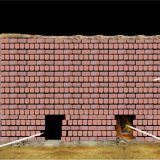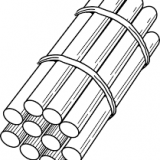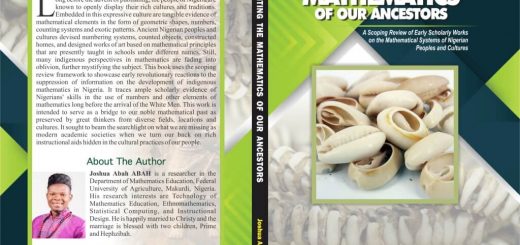The First Tiv Computing System*
![]()
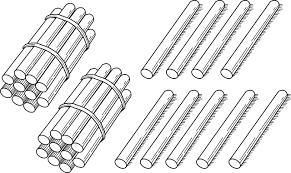
The Tiv people of Nigeria were naturally farmers. They technically cultivate yam, cassava, cereals and rear animals like cows, goats, sheep and poultry, while others hunt. As Tiv people became very efficient in farming, they produced a lot from the farm. Then, the need for a counting device became imperative.
Initially, Tiv people began to count their farm produce using fingers, which were only Ten in number and they became prone to forgetting the calculated results, since there was no possibility for storage of such results. This geared them towards new inventions and they adopted the use of stones. Stones were very heavy to carry about and to come-by, since they had to travel far and near in search of coloured stones.
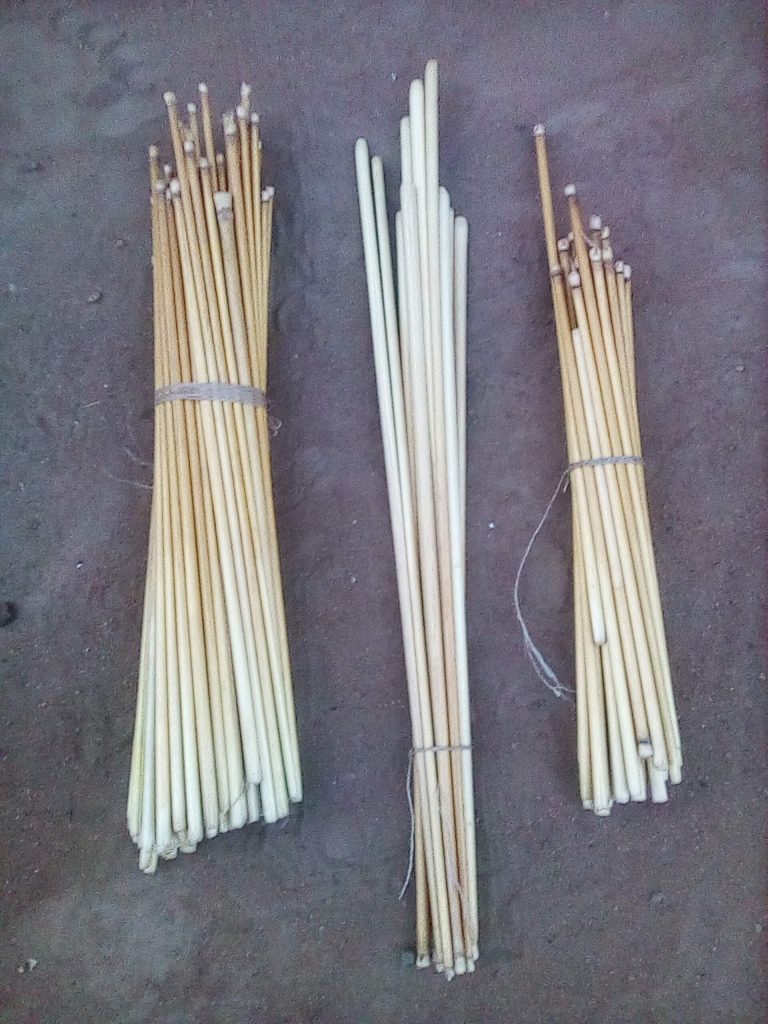
The Tiv people being witty in nature, wanted a device that would count, calculate and store results of their farm produce. Consequently, this paved the way for the invention of Azenga. With the aid of this device, they were able to count and keep the results of farm produce. To some extent, the Tiv people used this device to detect the fraud of their wives in consuming eggs in kitchen where poultry were kept. When travelling, a Tiv man would count the number of eggs and tie the Azenga corresponding to the number, and put the results in the Raffia Palm Bag (Ikpyacor), which was a simple traditional storage medium.
The ikpyacor was invented by Adamgbe Adasu Ijôhô Yaga from Kunav lineage of Tiv, in the 1850s to complement the difficulty in getting Lou, which was not affordable by everybody. Subsequently, the Ikpyacor was used as a temporally medium for a short time after which a class of special or crucial results were finally store in Lou. Lou was the first traditional storage medium and uncommon to everybody.
Upon return, the man would count the number of eggs and then refer to the results of the Azenga he tied before leaving for a journey. When the results did not tally with the corresponding number of eggs, fraud was detected. As the tampering of eggs by women became rampant in such a way as to destroy poultry farm, Tiv people strategically placed a ban on eating of eggs by women.
The Azenga Device
The Azenga device was invented by Chief Abuul benga of Ukan in the present Ushongo Local Government Area of Benue State, Nigeria in 1846. Since man was faced with the problem of counting articles from creation, the introduction of Azenga reduces stress in counting and virtually took over the position of stones, which were very heavy to carry about and at the same time very difficult to come-by.
The device was used in counting bigger numbers of Tens, Hundreds and Thousands. It was used to perform Mathematical calculations like Addition, Subtraction, Multiplication and Division. The use of this device became famous following its introduction in the then Infancy (Primary) and Colleges (Secondary) schools to teach mathematics.

The Device proved its efficiency owing to the fact that it did not require electricity for its operations. It is light to carry about and had colours to differentiate from the varying numbers it represents. The Azenga mechanism was popularly used in Nigerian Primary and Nursery (Kindergartens) schools to perform arithmetical operations especially in the rural areas of Benue State, Nigeria.
The usage of this device was simple, for instance, in a calculation of One Hundred minus Ten to get the result of ninety. The calculation will follow the separation of Ten Azenga of the system of 100 bundle; the rest will subsequently be computed to get the final result, which in this calculation equals 90. The use of this machine in schools improved the performance of students in mathematics since its invention over the years.
The use of Azenga device was much better when dealing with bigger numbers e.g. census, for it has colours like White, Yellow, Green and Red. The white (Pupuu) was used for counting numbers between 0-9, Yellow (Agbedaang) stands for Tens, Green (Kwer/Kyôn) for Hundreds and Red (Nyian) for Thousands. For example, performing arithmetic like 10+100+1000 = 1110, would only require three Azenga. A typical Tiv man would count Ten (10) and tie and then count Hundred and so on. He will then join them together and count in total to have his result. Hence, Azenga has many properties and characteristics. It uses its length to carry out mathematical functions. The long and short property of Azenga gave it credit in this perspective.
Furthermore, after the invention by Chief Abuul Benga, his counterpart and a bosom friend Chief Ajio at Shangev-Ya of the Kwande Local Government Area of Benue State tested and attested to its efficiency in arithmetic calculations in 1848. He used it in calculating and keeping result of his cows. In similar vein, Chief Agagbe Atongu of Ihyarev (Tyôshin) lineage used it for calculating money he got from sales of Beniseed (Ishwa) and he confirmed its suitability in both calculations and storage of results.
In Ukum, Zaki Biam Ala in 1849 used this device for calculating and keeping records of yams he harvested from his farm and how much was used and remained. Following the suitability of this device in calculation and storage of results, which is now referred to as data, the Tiv people also discovered the many uses of this device to determine the period and ages of children.
When a male child is born, the father will cut one of the (Ijinga) Azenga, tie it on a rope and store in a place called Lou, which was a storage bank for special, sensitive and valuable information and materials for future use.
In Tiv, one of the Azenga a Pupuu represents one year of a child. When they accumulate to fifteen, the father will know that his son was due for circumcision. It was also for determining ages of people by adding one of the Azenga each succeeding year.
The Azenga was also useful in marriage ceremonies (payment of bride price). The device was good for record keeping as a typical Tiv man would use the Azenga to determine how much is to be paid as bride price. The father-in-law (Terkem) would cut a number of Azenga one of which represents Pam (Pound), which is interpreted as Ikpya-nyar and gives it to the groom’s father (Wankem) from which the groom’s father (Wankem) would remove the ones he was able to pay and return the remaining to the father-in-law (Terkem).
When the number of Azenga was agreed upon, the Terkem then tied them and stored in Lou, the traditional bank. At any instance of addition on bride price was made, some of the Azenga would be deducted in accordance with the quarter paid.
The system of deducting Azenga in accordance with the money paid was continuous. This makes people of non-Tiv to begin speculation that bride price does not finish in Tiv. But this in real sense, was to enable a poor man to marry without being constrained of the bride price. A good gesture!
The mechanism was also used in teaching blind people arithmetic to enable them count and know to explain the number of visitors that visited home while others were on the farm.
Following the innovation of Azenga, which was very effective in calculation and storage of results, it was adopted in schools for teaching and learning arithmetic in the then Infant School in 1911. Apparently, the use of Azenga in schools spread rapidly all over the country within a short period between 1911 and 1915.

The device as a computing machine was also used for communication. In Tiv, when people passed information to other at a distance and if the information was special, Azenga must accompany it for remembrance. The numerous uses of Azenga have made this device valid until today. Many people in Benue rural areas are still using this mechanism. It is hoped that if the Azenga is reintroduced in schools for study of Mathematics and mathematics related subjects, it would ease the understanding of mathematics faster than depending on electronic calculators for learning same.
Download this article in PDF to see examples of classroom use of Azenga
*This article was originally published in Frontline News Vol. 2. No. 5, September 30, 2007, page 22 with the title: THE FIRST TIV COMPUTER -The History of Azenga Computing Device.
It is being re-published here with permission.
Views: 817




